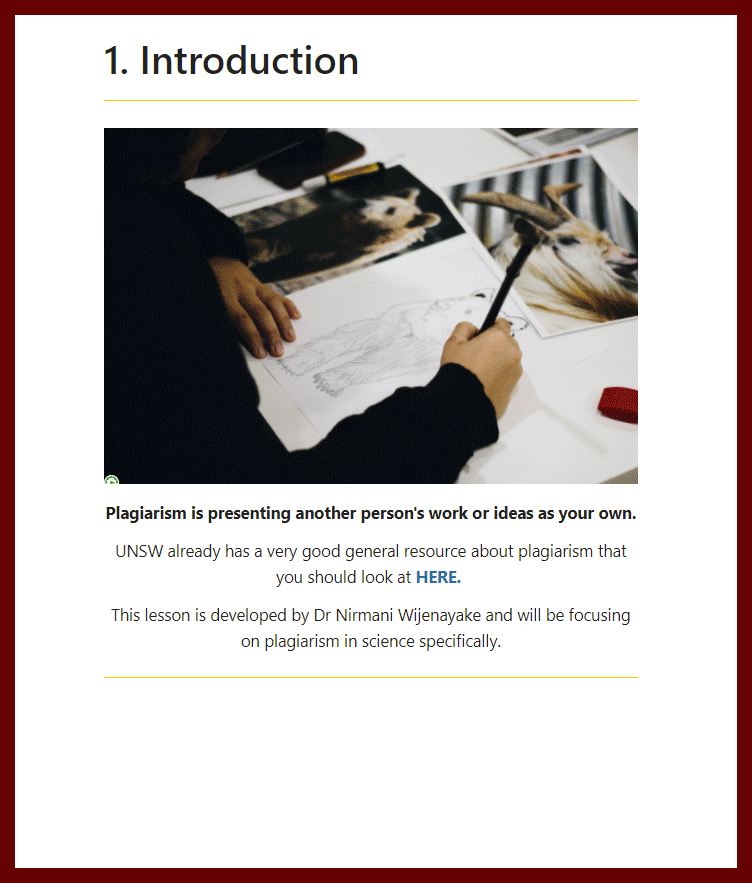
I am one of the two plagiarism officers for the School of Biotechnology and Biomolecular Sciences (BABS) and as such, I get sent cases of academic misconduct from all the undergraduate BABS courses. This role requires me to look at all the case documents and decide which category the case falls under. The student is then notified via an official letter requesting a meeting to discuss the case. A meeting is arranged (usually via Microsoft Teams) and we discuss the case to understand the reasons behind the misconduct. The meeting ends with providing the student with advice and resources to help avoid this situation in the future. I then email the course coordinator with my recommendations for the next steps regarding the plagiarised work and write an official misconduct report to be filed in the plagiarism system. As the final step, the student is placed on the UNSW Plagiarism register. It takes between 3-4 hours to handle all the steps of an academic misconduct case. Since 2020, I have handled 12 cases through the full process described here and also been consulted on over 15 other cases where I have provided my professional opinion on deciding the level of the misconduct and recommendations.
Having done multiple interviews it was clear to me that most of the misconduct was because the student was not clear on what constituted plagiarism rather than truly trying to cheat the system. Even though the students have gone through some basic training on academic misconduct via the UNSW ELISE tutorial when they first entered University, it was not sufficient. As a strategy to decrease the number of plagiarism cases in BABS I decided to develop an interactive lesson around plagiarism and academic misconduct specifically for BABS students. Since most plagiarism cases involve poor scholarship and minor plagiarism levels, I believe many of these can be avoided by providing students with more thorough discipline-specific training which is lacking in the ELISE tutorial. I wanted my lesson to be short and to the point and include Science and BABS-specific examples. The lesson was built using Moodle books and includes the following topics.
- Collusion
- Paraphrasing
- Examples of Plagiarised work
- Difference between Citations and a Reference List
Few sections from the lesson can be seen below.

IMPACT
I first used the lesson in my Fundamentals of Biochemistry (BIOC2181) course in Term 2 of 2021. I had it on my course Moodle page under the assessment section as an additional optional resource. I mentioned it once during the course and made them aware it is available if they wish to use it. Based on Moodle data, 25 out of 142 students (18%) have clicked on the lesson and 14 out of 25 (10%) have attempted the embedded interactive questions within the lesson.
Based on these numbers, it was clear that leaving the decision up to the student to interact with this lesson was not very effective. Therefore, in Term 3 of 2021, I converted the materials from the lesson into a lecture and delivered it LIVE to my Big Fat Myths (BABS1111 and GENS1111) students.
FUTURE
- Incorporate the lesson as a compulsory task at the start of the Term in my courses.
- Provide the lesson as a resource/refresher for students who get picked up for poor scholarship or minor plagiarism.
OTHER DIMENSIONS THIS CAN FALL UNDER
Design-1




